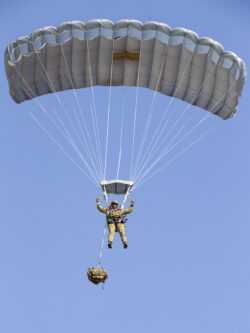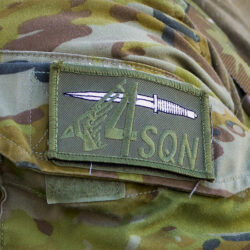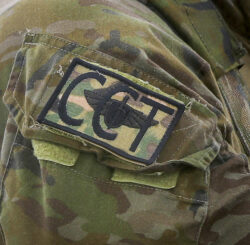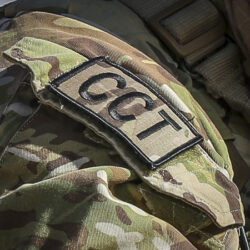Australian Airborne Insignia #4 – RAAF Combat Controller Teams

The Combat Controller Teams (CCT) of B Flight, 4 Squadron, Royal Australian Air Force are a relatively recent addition to Australia’s special operations capability. They trace their origin to 2006 when the Australian Special Forces Commander asked the Deputy Chief of Air Force whether the RAAF was capable of fielding personnel similar to the United States Air Force Combat Controllers who had been working alongside Australian Special Forces in Afghanistan.
As a result, the RAAF Air Group Combat Commander established the Special Tactic Project Proof of Concept Trial. The aim was for selected volunteers to pass the commando training cycle and trained as Joint Terminal Attack Controllers (JTAC) before deploying in support of special forces.



Between 2008 and 2009, three intakes completed initial training and four members were deployed with the Special Operations Task Group (SOTG). This resulted in the ‘Combat Controller’ mustering (RAAF terminology for ‘trade’) and Air Surface Integration officer stream being created in 2012 and the CCT role declared an Initial Operating Capability.



Selection to become a combat controller is open to any member of the Australian Defence Force (ADF). Volunteers first complete an 8 week CCT intake course which provides ground skills training and prepares them for the Special Forces Entry Test (SFET). Those who pass the SFET must then undertake around 18 months of testing and training in which they are required to complete the commando reinforcement cycle, JTAC, aviation meteorology, assault zone reconnaissance and air weapons delivery courses.

Upon qualification they are presented their distinctive grey CCT beret and qualification brevet, becoming part of B Flight of 4 Squadron, RAAF, which is the squadron tasked with providing operational training to Forward Air Controllers (FAC) and support of the Australian Army’s Special Operations Command. The Squadron is divided into three main roles, FAC(A) is the airborne control of air assets, JTAC training (C Flight) and CCT (B Flight).
Since their formation, the CCT’s have conducted operations with SOTG, participated in several joint exercises with allied nations and recently in late 2019 early 2020, assisted in humanitarian operations within Australia as part of the ADF efforts to combat the devastating bushfires that swept large tracts of the east coast of Australia over the summer months.

Beret & Insignia

Once qualified, Combat Controllers are awarded a distinctive Combat Controller Team insignia which is worn as a qualification badge and (a variation) also on their beret. The badge (NSN 8455-66-162-5061) consists of a Fairbairn-Sykes commando dagger on a winged shield. The dagger represents the close link combat controllers share with the special forces they support. The shield symbolises the protection of ground forces, from harm during combat operations and the wings represent the air-power integration role of the combat controller.

The badge is worn on the left breast of dress uniforms, 3mm above medals/ribbons or flying badge if applicable. Cloth, metal and a mess dress miniature versions are used, depending on the uniform type.

A similar design metal badge which features shortened wings is also worn on a black shield on the CCT beret which, unlike other RAAF berets is ‘air superiority’ grey, the colour signifying the presence of aviation in the daily duties of the combat controller. Mark Corcoran and Arthur Butler, author’s of the excellent reference books, Metal Uniform Embellishments of the Australian Army – Post 53 (‘QE II series’) volumes 1 & 2 also feature some of the prototype variations of the badge on their charliebravobooks blog which is worth checking out.

CCT’s also wear a distinctive parachute qualification wing which differs from the standard Air Force parachutist badge. The wings are referred to in the Air Force Dress Manual as a ‘Commando Badge’ (NSN 8455-66-157-9911) and reflects the Army’s commando parachutist qualification design but has a white parachute with light blue wings on an Air Force blue background. A miniature version embroidered with gold bullion on a black background (NSN 8455-66-134-1212) is worn on the upper left sleeve of the mess dress jacket. The authority for the award and withdrawal of the Commando Badge is the Commanding Officer, 4SQN.



CCT’s have also been seen wearing a variety of Combat Controller Team patches and distinctive RAAF ANF insignia, some of which are shown below. At this stage, these insignia are less well known amongst collectors as they are tightly controlled by the unit and have not (yet) been subect to the massive number of fakes and reproductions that have occurred with other Australian Special Forces insignia. Sadly, it is only a matter of time before the fakes start appearing on eBay and elsewhere. If you do have original examples of the RAAF 4 Squadron or CCT patches or insignia, for sale or trade, I am really interested in hearing from you as I’d love to add these to my collection.

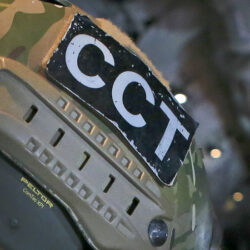



In 2007, then Squadron Leader, Reynolds joined the newly formed Special Tactics Project within Headquarters Air Combat Group. He completed Commando Reinforcement Training Cycle that year and Joint Terminal Attack Controller Course in 2008. He led the Air Force Special Tactics Flight, which subsequently became B Flight (CCT), No 4 Squadron, deploying twice in support of Special Operations Task Group as part of Operation Slipper.
He was appointed a Member of the Order of Australia (AM) in January 2011 for his exceptional service to the RAAF in the promotion of Air Power. He was promoted to Wing Commander and appointed as Commanding Officer, No 4 Squadron in 2013, where he was responsible for leading Air Force’s Joint Terminal Attack Controller training, the Combat Control Teams and Forward Air Controller capabilities.

